Substantiating charitable contributions by individuals
A reminder about the requirements to substantiate all of your charitable contributions. If the contribution is $250 or more, you’ll need a written receipt from the charity. If you donate property valued at more than $500, additional requirements apply. Here are the details.
General rules
For a contribution of cash, check, or other monetary gift, regardless of amount, you must maintain a bank record or a written communication from the donee organization showing its name, plus the date and amount of the contribution. Any other type of written record, such as a log of contributions, is insufficient.
For a contribution of property other than money, you generally must maintain a receipt from the donee organization that shows the organization’s name, the date and location of the contribution, and a detailed description (but not the value) of the property. If circumstances make obtaining a receipt impracticable, you must maintain a reliable written record of the contribution. The information required in such a record depends on factors such as the type and value of property contributed.
If the contribution is worth $250 or more, stricter substantiation requirements apply. No charitable deduction is allowed for any contribution of $250 or more unless you substantiate the contribution with a written receipt from the donee organization. You must have the receipt in hand when you file your return (or by the due date, if earlier) or you won’t be able to claim the deduction. If you make separate contributions of less than $250, you won’t be subject to the written receipt requirement, even if your contributions to the same charity total $250 or more in a year.
The receipt must set forth the amount of cash and a description (but not the value) of any property other than cash contributed. It must also state whether the donee provided any goods or services in return for the contribution, and if so, must give a good-faith estimate of the value of the goods or services.
If you received only “intangible religious benefits,” such as attending religious services, in return for your contribution, the receipt must say so. This type of benefit is considered to have no commercial value and so doesn’t reduce the charitable deduction available.
In general, if the total charitable deduction you claim for non-cash property is more than $500, you must attach a completed Form 8283 (Noncash Charitable Contributions) to your return or the deduction is not allowed.
For donated property with a value of more than $5,000, you are generally required to obtain a qualified appraisal and to attach an appraisal summary to the tax return. However, a qualified appraisal isn’t required for publicly-traded securities for which market quotations are readily available. A partially completed appraisal summary and the maintenance of certain records are required for (1) nonpublicly-traded stock for which claimed deduction is greater than $5,000 and no more than $10,000, and (2) certain publicly-traded securities for which market quotations are not readily available.
For gifts of art valued at $20,000 or more, you must attach a complete copy of the signed appraisal (rather than an appraisal summary) to your return. IRS may also request that you provide a photograph.
If an item of art has been appraised at $50,000 or more, you can ask IRS to issue a “Statement of Value” which can be used to substantiate the value.
Recordkeeping for contributions for which you receive goods or services. If you receive goods or services, such as a dinner or theater tickets, in return for your contribution, your deduction is limited to the excess of what you gave over the value of what you received. For example, if you gave $100 and in return received a dinner worth $30, you can deduct $70. But your contribution is fully deductible if:
- you received free, unordered items from the charity that cost no more than $10.50 in 2015 ($10.40 in 2014) in total;
- you gave at least $52.50 in 2015 ($52 in 2014) and received only token items (bookmarks, key chains, calendars, etc.) that bear the charity’s name or logo and cost no more than $10.50 in 2015 ($10.40 in 2014) in total; or
- the benefits that you received are worth no more than 2% of your contribution and no more than $105 in 2015 ($104 in 2014).
If you made a contribution of more than $75 for which you received goods or services, the charity must give you a written statement, either when it asks for the donation or when it receives it, that tells you the value of those goods or services. Be sure to keep these statements.
Cash contribution made through payroll deductions. You can substantiate a contribution that you make by withholding from your wages with a pay stub, Form W-2, or other document from your employer that shows the amount withheld for payment to a charity. You can substantiate a single contribution of $250 or more with a pledge card or other document prepared by the charity that includes a statement that it doesn’t provide goods or services in return for contributions made by payroll deduction.
The deduction from each wage payment is treated as a separate contribution for purposes of the $250 threshold.
Substantiating out-of-pocket costs. Although you can’t deduct the value of services you perform for a charitable organization, some deductions are permitted for out-of-pocket costs you incur while performing the services. You should keep track of your expenses, the services you performed and when you performed them, and the organization for which you performed the services. Keep receipts, canceled checks, and other reliable written records relating to the services and expenses.
As discussed above, a written receipt is required for contributions of $250 or more. This presents a problem for out-of-pocket expenses incurred in the course of providing charitable services, since the charity doesn’t know how much those expenses were. However, you can satisfy the written receipt requirement if you have adequate records to substantiate the amount of your expenditures, and get a statement from the charity that contains a description of the services you provided, the date the services were provided, a statement of whether the organization provided any goods or services in return, and a description and good-faith estimate of the value of those goods or services.
Please call us if you have any questions about these rules. Together we can make sure that you’ll get all the deductions to which you’re entitled come filing deadline.




